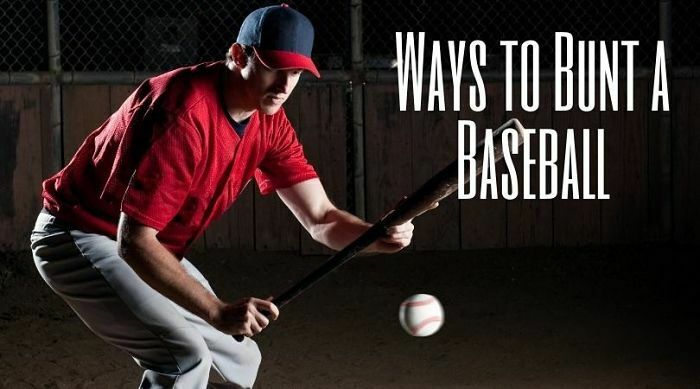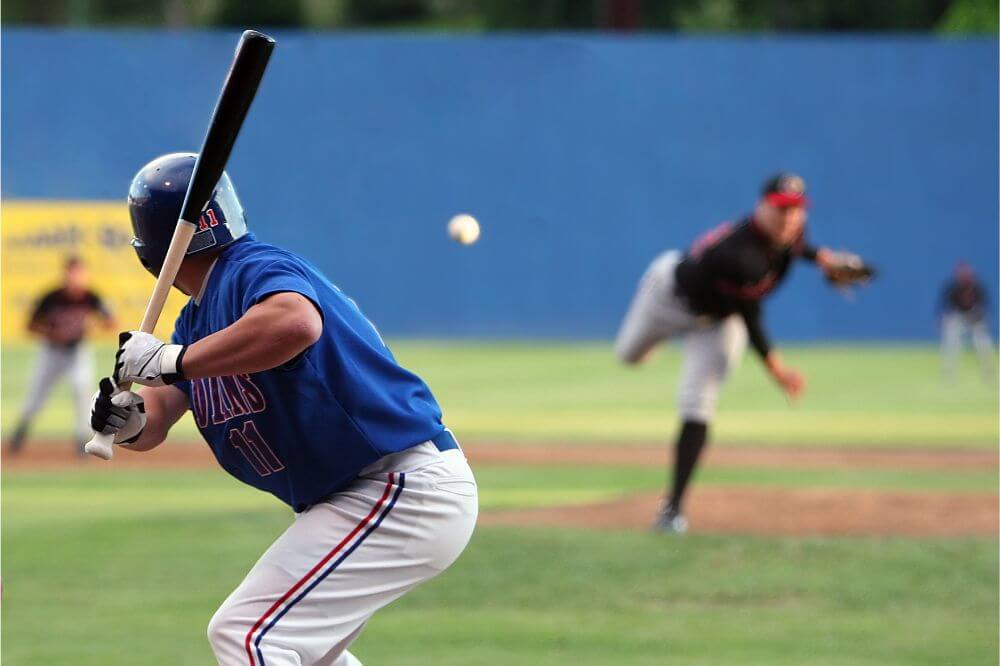Bunting in baseball is a controversial play. It is a very strategic type of play, although its usefulness is often debated. Usually, a bunt sacrifices the bunter in favor of players already on base. It sends the ball off in a direction that allows on-base players to advance to the next bases.
However, this is not always the case. There are some cases where bunting is not entirely so sacrificial in nature. On that note, there are a few different ways to bunt, or in other words, types of bunts.
Each way serves a slightly different purpose. So, let’s take a closer look at the different ways to bunt a baseball. We will also discuss the purpose behind each bunt.
Four Main Baseball Bunt Types
There are four different ways to bunt a baseball, each with its own purpose. So let’s take a closer look.
The Sacrifice Bunt
The most common type of bunt is the sacrifice. The goal of the sacrifice bunt is to help a runner on base advance further. The batter who bunts the ball is generally sacrificed. As a result, they will be out by the end of the play. However, this allows a runner to quickly move to the next base on the diamond.
Generally, this is done when a runner is on first or second base. The most common scenario for a sacrifice bunt is a runner on second base, and there are no outs. Most baseball statisticians say that a sacrifice bunt is one of the easiest ways to achieve a single run.
There are two purposes that a sacrifice bunt can serve. The first is to help an on-base runner advance their position, thus being in a better position when the next batter comes up. The second possible goal is to avoid a double play – preventing two players from being tagged out.
The Suicide Squeeze Bunt
The suicide squeeze bunt is designed to get a runner from third base to home plate. The runner will leave third base before the batter bunts the ball. The aim is to get the runner to home plate before the play has barely started.
This is an excellent way to get a run, although risky. If the batter does not make contact with the ball, chances are that the runner will be tagged out. This play generally sacrifices the batter.
The Safety Squeeze Bunt
This is another type of squeeze bunt to get a runner from third base to home plate. This type of bunt sees the runner wait until the batter has made contact with the ball to leave third base.
This is generally safer for the runner. In addition, it will usually decrease or eliminate the chances of a runner being tagged out at home plate after the pitch has been thrown.
The Drag Bunt
The drag bunt is a highly unique type of bunt. This is actually the only type of bunt in baseball that does not sacrifice the batter. In fact, the opposite is the goal here. Instead of sacrificing the batter to benefit a runner, this type of bunt is all about getting the batter on first base.
The element of surprise is crucial because this type of bunt is not sacrificial in nature. You do not show your intention to bunt until the last possible second, preferably when the pitch has already been thrown. Of course, getting the timing right is tricky.
If you are a left-handed hitter, the aim is to bunt the ball down the third baseline. If you are a right-handed hitter, the objective is bunting the ball along the first baseline.
Generally speaking, the drag bunt is performed mainly by left-handed players. Right-handed hitters can also do it, although it is more complicated. The play is easier when the ball is bunted down the third base line instead of the first base line.
The goal is to bunt the ball in a direction that will cause it to be just far enough from the opposing players to provide the batter with enough time to get to first base.
Conclusion
As you can see, there are four specific bunt types, each with a particular purpose. Generally, bunts sacrifice the batter to favor the runner(s) already on base.
However, the drag bunt is all about getting the batter to first base. Indeed, bunting is a widely debated practice in baseball, one that not everybody likes.
Thanks for stopping by ~Jeremy


